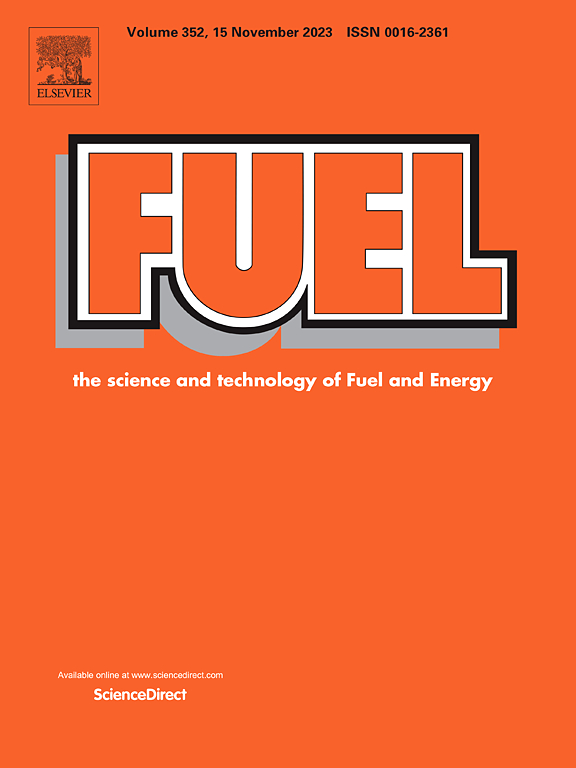Large Eddy simulation of dilution and preheating impacts on chemical aspects of flame stabilization in a gas turbine model combustor
IF 6.7
1区 工程技术
Q2 ENERGY & FUELS
引用次数: 0
Abstract
Reducing fuel consumption and chemical pollutions is considered as a crucial issue, as many applications still depend on fossil fuels. In this paper, large eddy simulations of a gas turbine model combustor (GTMC) are performed in both normal and diluted/preheated conditions to have a better understanding of MILD combustion in these combustors. For this purpose, the flame structures are studied using the graphical and statistical tools, and the accuracy of the simulations is assessed by comparing the time-averaged results to the available experimental data. To model the turbulent combustion, Eddy Dissipation Concept (EDC) method is used with DRM-22 reduced mechanism in addition to the Wall-Adapting Local Eddy-Viscosity (WALE) turbulence model. To simulate the MILD combustion conditions, about 36 % reduction in fuel flow rate, 32 % dilution of the oxidizer (by EGR), in addition to preheating air to 730 K are used in the investigated diluted/preheated case. It is shown that the dilution/preheating of the incoming air creates stronger vortices (due to higher inlet velocities), faster mixings, and lower rates of H-atom abstraction (also due to lower fuel flow rates) in the upstream parts of the reactant jet, which is shown effective in expanding the radicals of the diluted/preheated flame. Moreover, it is observed that dilution/preheating reduces HO2 formation rates (and consequently weakens H2O2 routes) in upstream parts of the reactant jet, and also increases the rate of both chain branching and recombination reactions. Investigation of negative heat release spots reveals that their strength shows an almost linear relation with Q-criterion in the regions dominated by vorticity and they also appear closer to the positive heat release spots in the diluted/preheated mode. Furthermore, a generalized autoignition index is proposed based on the HO2 kinetics and it is used to illustrate the flame propagation and autoigntion regions for the investigated flames, which shows the spatial expansion of reaction spots in the diluted/preheated combustion mode and small role of auto-ignition spots in overall heat release for both flames. The CH2O dynamics also shows more distributed ignition for the diluted/preheated case in addition to the appearance of intermittent strong CH2O spots for both flames. Furthermore, the statistical analysis reveals less dependence of the ignition process on velocity gradients in the diluted/preheated mode. It is shown that while the rate of kinetically slower elementary reactions drops sharply in high strain regions of the normal combustion case, the rate of these reactions are less affected in the diluted/preheated mode. Consequently, some of the OH producing reactions are inhibited in high strain regions of the conventional combustion case, which causes the flame of this case to be stabilized outside of the high strain zones. Remarkably, while the positive heat release spots of the diluted/preheated flame are observed to be active inside the reactant jet, they are shown to be located mostly near the boundaries of the reactant jet in the normal flame case.

求助全文
约1分钟内获得全文
求助全文
来源期刊

Fuel
工程技术-工程:化工
CiteScore
12.80
自引率
20.30%
发文量
3506
审稿时长
64 days
期刊介绍:
The exploration of energy sources remains a critical matter of study. For the past nine decades, fuel has consistently held the forefront in primary research efforts within the field of energy science. This area of investigation encompasses a wide range of subjects, with a particular emphasis on emerging concerns like environmental factors and pollution.
 求助内容:
求助内容: 应助结果提醒方式:
应助结果提醒方式:


